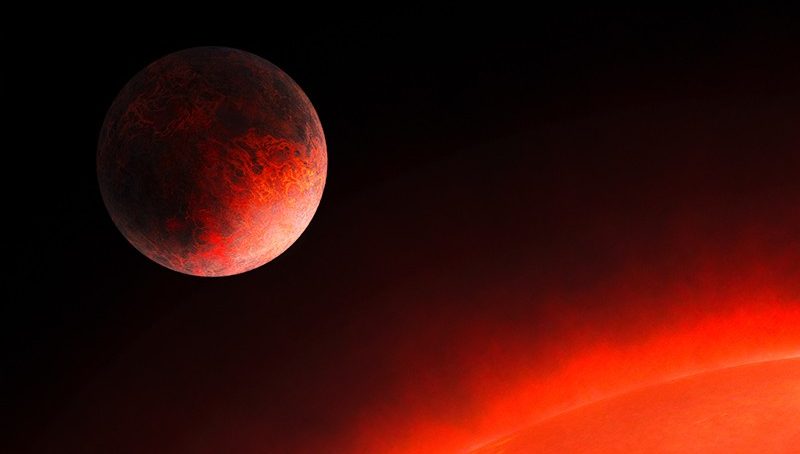
Astronomers have spotted the tiniest, most metal-based planet yet – an iron-rich world that is light years away from Earth and zips around its star once every eight hours.
The planet, known as GJ 367b, is three-quarters the size of Earth, but much denser. It’s more like Mercury, in that it is made mostly of iron and is superheated by blazing radiation from its star.
GJ 367b is a searing 1,500 °C during the day – nearly hot enough for its iron to begin to melt.
GJ 367b is the smallest planet beyond the Solar System for which scientists have been able to determine the composition, says Kristine Lam, an astronomer who recently moved from Technical University Berlin to the German Aerospace Center in Berlin, Germany. She and her colleagues reported the finding on 2 December 2 in Science.
Astronomers have discovered more than a dozen ‘ultrashort-period’ planets, which are so close to their stars that they make a complete orbit in less than a day, like GJ 367b. Its iron-rich nature makes it a sort of planetary laboratory for understanding the extreme conditions in which planets can form and evolve.
The discovery also “showcases our ability to measure the mass of tiny, sub-Earth planets”, says David Armstrong, an astronomer at the University of Warwick in Coventry, UK. “Being able to observe such planets, despite them being many light years away from us, is fascinating and promises many Earth-like planet discoveries in the future.”
Lam’s team discovered GJ 367b in 2019 using data from NASA’s planet-hunting Transiting Exoplanet Survey Satellite (TESS), which has spotted 172 of the 4,500 or so planets known to be orbiting stars other than the Sun.
GJ 367b is more than 9 parsecs (31 light years) away from Earth, in the southern constellation Vela. The researchers used several ground-based telescopes to confirm the exoplanet’s existence and to gather data that revealed its size and mass in unprecedented detail — it is 0.72 times the size of Earth and 0.55 times the mass.
Those two precise pieces of information allowed the team to calculate the planet’s density as being more than 8 grams per cubic centimetre, which is close to the density of iron and much higher than Earth’s 5.5 grams per cubic centimetre. GJ 367b is probably made mostly of an iron core surrounded by a thin layer of rock, with perhaps some ice or gas enveloping it. “It’s pretty wild,” says Lisa Dang, an astronomer at McGill University in Montreal, Canada.
Other extremely dense planets have been found before, including one nearly as big as Neptune2. But finding a tiny version shows that astronomers can push the boundaries of finding extreme worlds, Lam says.
Theorists have several ideas about how heavy-metal planets could form. They could have started out as large planets with iron cores sheathed in vast layers of rock, before collisions with other space rocks stripped off their covering and left behind the nearly naked iron core. Or the searing radiation from the planets’ stars could have stripped off some material as the bodies were forming.
GJ 367b’s star is a red dwarf, smaller and cooler than the Sun. Lam’s team spotted hints of a second planet orbiting it, around once every 11 days, but have not yet been able to confirm the existence of any planets other than GJ 367b.
GJ 367b probably isn’t a great place to look for extra-terrestrial life, given its intense heat and radiation. “Of course, it’s not pleasant to live on,” Lam says. But the planet could potentially have an atmosphere, which would be an interesting environment.
If the planet’s surface is partially molten, then GJ 367b might have an atmosphere dominated by minerals that boiled off the planet’s surface, Dang says. Lam and her colleagues hope to search for an atmosphere using observatories such as NASA’s James Webb Space Telescope, which is scheduled to launch on December 22.
- A Nature report











